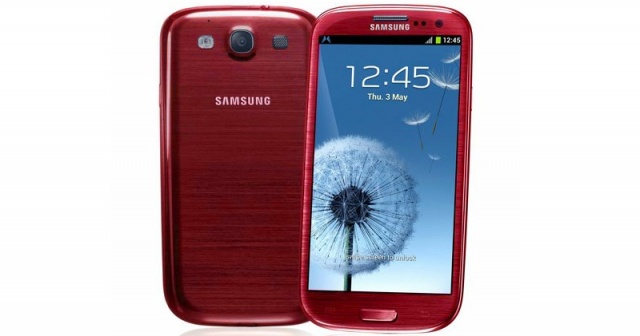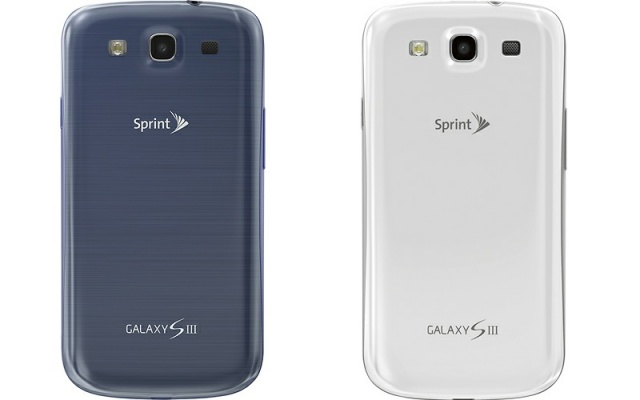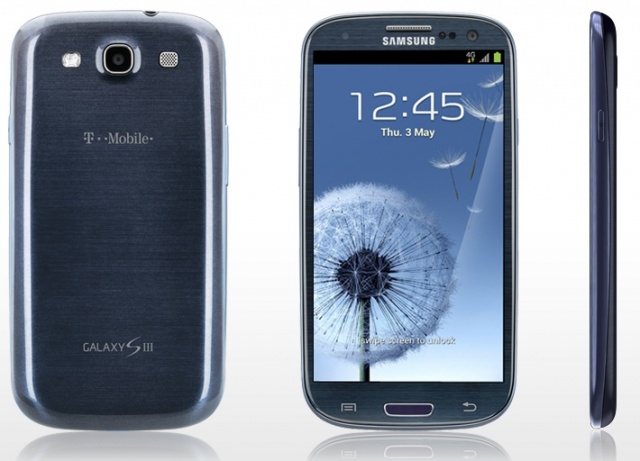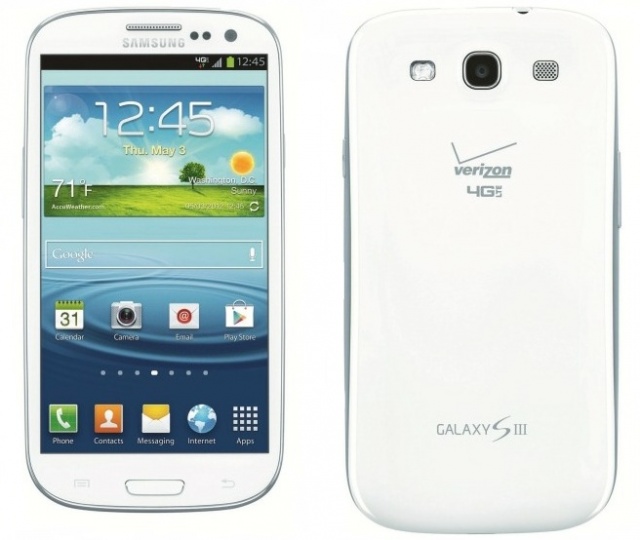All You Need To Know About The Samsung Galaxy S III And Its U.S. Launch
We’ve yet to get our hands on a Galaxy S III review unit (coming soon, I hope) but the least we could do is give you a an idea of what to expect from Samsung’s next big thing. Since the Galaxy S III is launching on almost every carrier under the sun, we’ll focus on a few of the major players and how well the GS3 appears to perform.
Aesthetically, the Galaxy S III you pick up in the U.S. will seem identical to the one you pick up overseas, or in Canada for that matter. However, no two carriers are alike, which means there are some differences in hardware and software, depending on who you choose.
Speaking of design, Samsung continues its pattern of using light, plasticy materials. It may be plastic, but it’s good-looking plastic! The casing for the Samsung Galaxy S III has more shine, curves, and colorful contours than you can shake a plastic stick at.
With all that plastic, gloss, and shine, the consensus surrounding the design of the Samsung Galaxy S III is that it’s a winner and we’d have to agree.
AT&T
As I said earlier, the Samsung Galaxy S III basically looks as it should. However, in addition to the traditional Pebble Blue and Marble White colors, AT&T will be getting an exclusive red colored Galaxy S III later this summer.
Inside the AT&T version here in the U.S., you’ll find a 1.5GHz dual-core Qualcomm S4 processor instead of the quad-core Exynos found in the European version. We know… a dual-core processor? *Gasp* Don’t fret, though: it’s been proven to be plenty powerful, as well as efficient, many times over.
Also included in the U.S. version is a bump up in the available RAM. The AT&T U.S. model comes with a full 2GB of RAM — a much needed spec to ensure TouchWiz plays nice. Other goodies found inside the AT&T Galaxy S III include:
- 16GB of internal storage (no 32GB option) / expandable to 64GB with microSD
- 2100 mAh battery (removable thankfully)
- 8 MP rear camera with LED flash
- 1.9 MP front facing camera
- Android 4.0 with TouchWiz
- 4.8-inch 1280×720 (306ppi) HD Super AMOLED screen
- Corning Gorilla Glass 2
- NFC (no Google Wallet)
- WiFi Direct
- GSM/GPRS/EDGE 850/900/1800/1900 MHz
- 3G – UMTS 850/1900/2100 MHz
- 4G HSPA+ 4G speeds delivered by HSPA+ (with enhanced backhaul)
- 4G LTE Band 4 and 17
- Bluetooth 4.0
- 5.38 x 2.78 x 0.34 inches
- 4.73 ounces
- Micro USB
- HDMI out via MHL
- and more…
Camera
A lot of comparison between the Samsung Galaxy S III and the HTC One X cameras is being thrown around. While it still looks like the HTC One X wins that battle, the Samsung Galaxy S III camera is no slouch. The SG3 camera is fast, so fast, that I just took 3,000 photos of you. Of course I’m kidding about that last part, but the camera is fast.
Featuring zero shutter lag and less than one second start time, you’ll be snapping photos in burst-shot mode like a U.S. marine firing off a Dillon M134 Gatling Gun.
Picture quality appears to be okay for a 8MP rear facing camera, but it’s certainly no DSLR. Luckily there’s enough modes, focus settings, exposure, ISO, white balance and settings to make your shots look a bit cleaner.
The biggest features of the Samsung Galaxy S III come in the various software perks such as Share Shot, Buddy Photo Share, and more (which we cover briefly later on).
The SG3 records 1080p video and does it quite well. There’s little to worry about when recording with the SG3 and you even have the ability to take still images while recording by tapping on the screen (just like the Galaxy Nexus).
We can all agree, the Samsung Galaxy S III has some serious hardware, so how about we see what people are saying about the software.
Software
Here’s where the majority of reviewers feel the Samsung Galaxy S III takes a dive. Most are in agreement that Samsung’s TouchWiz, which they insist on layering on top of our beautiful Android 4.0, takes away from the user experience and is more intrusive than welcomed.
While other manufacturers are scaling back on their custom UIs in favor of Android 4.0, Samsung seems to have vamped up its TouchWiz presence and it feels more like that annoying 3rd wheel who refuses to leave you alone with your beautiful date. So expect to throw Ice Cream Sandwich to the wind and prepare to be pummeled by TouchWiz Sandwich if you decide to pick up the Galaxy S III.
So how’s the bloatware on AT&T? Surprisingly scarce! I know, I’m as shocked as you are. Apparently AT&T has managed to give users a break, with only around five of the 40+ preloaded apps under their influence. It’s actually Samsung who has polluted their own device with endless grids of proprietary crap.
What about all of the new features Samsung is boasting about? We’ll let’s take a look:
S-Voice
S-Voice is Samsung’s answer to Apple’s Siri. It essentially acts in same manner and plays off of Android’s already built-in voice actions while leveraging services like Vlingo and Wolfram Alpha to combine for a Siri-like voice assistant. S-Voice can perform a plethora of tasks, from giving you the weather to turning on Wifi.
The whole concept, in my mind, borders on mental illness, but if you enjoy conversing with inanimate objects, S-Voice will fulfill your desire — sometimes. Apparently, S-Voice should have been slapped with a beta tag because reviewers have been reporting sketchy results, long processing times, and flat out refusals to perform acknowledged tasks (sound like my local DMV).
S-Beam
S-Beam takes the already awesome Android Beam and cripples it by making it locked to Samsung. Combining NFC and WiFi Direct, S-Beam allows users (Samsung Galaxy S III users) to share large files, photos, videos, as well as the usual contact info, maps, and urls by simply tapping the backs of their phones together. Unlike Android Beam, you can bump it and forget it, rather than needing to hold the devices together until the transfer is complete.
Samsung boasts fast transfer speeds but real-life tests beg to differ. Overall, S-Beam seems to be a useful and welcomed addition. It’s only plagued by its proprietary nature, making it difficult to take advantage of — unless everyone else has it.
Other Features
The Samsung Galaxy S III has many other features, including:
- Pop up play – Allows you do two things at once: watch HD videos as you email or text.
- Buddy Photo Share – The Galaxy S III recognizes the faces of your friends, so it can share photos with them right away
- Share Shot – Send photos to all your party guests so everyone leaves with snapshots of the event.
- AllShare Play – Share files with other devices and access those files on various devices, such as documents or multimedia files between your Galaxy S III phone and a tablet, PC or television
- AllShare Group Cast – Share and collaborate on documents, presentations or images in real-time with multiple friends or co-workers without loading the file separately.
- Smart Stay – The screen display will remain bright as long as you’re looking at the phone
- Direct Call – If you’re text messaging with a friend, you can easily switch to calling them instead by simply lifting the phone to your ear, and it will automatically dial their number.
- Smart Alert – A vibrating nudge to let you know about missed calls and messages
- TecTiles – Programmable NFC tags that can be customized to launch apps, send text messages, share contact information, change phone settings and more
A few carriers have opted into an agreement with Dropbox to give users a bonus 50GB of storage with their Galaxy S III device, however, AT&T is not one of them.
The AT&T Samsung Galaxy S III is available for pre-order and is scheduled to ship on or around June 28th. The cost for the Samsung Galaxy S III on AT&T is $199.99 (16GB Model only) with a two-year agreement.
Sprint
I won’t go over all of the bells and whistles as I’ve pretty much covered them all under the AT&T section, however, I will provide you with what you can expect to be different in the Samsung Galaxy S III from Sprint.
Unlike AT&T, Sprint will be selling both the 16GB ($199.99 with 2-year agreement) and 32GB ($249.99 with 2-year agreement) versions, both in the classic Pebble Blue or Marble White. One major thing missing in Sprint’s version of the Samsung Galaxy S III is an LTE network. Sprint has yet to roll out LTE so your speeds on Sprint will be limited to 3G (EVDO) speeds, although, this also equates to better battery life.
Believe it or not, Sprint actually has pre-loaded more apps on the Galaxy S III than AT&T, but it’s still surprisingly minimal. Sprint customers will also be the only ones to have Google Wallet come standard (or be allowed for that matter) on the Samsung Galaxy S III.
Sprint is also one of the carriers who opted to team up with Dropbox, which means that Sprint customers will be treated to a bonus of 50GB of free Dropbox storage (for a limited time). Other than that, Sprint remains the only carrier to still offer truly unlimited data, but who knows how long that will last.
T-Mobile
T-Mobile has strayed from the bunch in more ways than one. First off, they’ve broken up their launch into two phases. The first phase begins today and makes the Samsung Galaxy S III available at retail stores in the following markets:
- Los Angeles, CA
- Chicago, IL
- Phoenix, AZ
- Houston, TX
- SanDiego, CA
- NewYork, NY
- Seattle, WA
- Miami/Ft.Lauderdale, FL
- Dallas/Ft.Worth, TX
- SanFrancisco, CA
- SaltLakeCity, UT
- Denver, CO
- Minneapolis, MN
- Tampa/St.Petersburg, FL
- Philadelphia, PA
- SanAntonio, TX
- Portland, OR
- Austin, TX
- Atlanta, GA
- KansasCity, MO
- Boston, MA
- Sacramento, CA
- Orlando, FL
- Detroit, MI
- Washington DC*
- Cleveland, OH
- Jacksonville, FL
- Charlotte, NC
- McAllen, TX
Anyone not lucky enough to live in one of the above cities will have to wait until the second phase, which will begin on June 27th.
T-Mobile users will unfortunately have to pay a bit extra for their Samsung Galaxy S III, as T-Mobile has decided to charge those with a qualifying Value voice and data plan an out-of-pocket down payment of $229.99 (16GB) or $279.99 (32GB) with 20 equal monthly payments of $20 per month via T-Mobile’s Equipment Installment Plan (EIP).
Anyone with a qualifying Classic voice and data plan, will have to shell out $279.99 (16GB) after a $50 mail-in-rebate card or $329.99 (32GB) after a $50 mail-in-rebate card with a two-year service agreement.
We have no idea why T-Mobile is charging more than every other U.S. carrier and we’re sure their customers will have a few words about it. As with the majority of carriers, T-Mobile will carry both the 16GB and 32GB in both Pebble Blue and Marble White.
Verizon
Not much is known about Verizon’s Galaxy S III but one thing’s for sure, it will have the best 4G LTE coverage. We’re also betting it will have the most bloatware.
Verizon pricing will be on par with the rest of U.S. carriers: $199.99 for the 16GB model and $249.99 for the 32GB model. Verizon will be the last to launch the Galaxy S III, with an expected shipping date of July 10. You’ll have a choice of Pebble Blue and Marble White, and we’ll just have to wait for any other details.
Conclusion
That about does it for our Samsung Galaxy S III U.S. round up, reviewers around the web agree Samsung has something special, they just wish it came without TouchWiz. Grab it if you can and let us know what you think of Samsung’s latest flagship device.
Don’t go to far, we’ll be following up this post with a contest to win a few Galaxy S III cases from Cruzerlite. You don’t want to be caught without protection, now do you?







